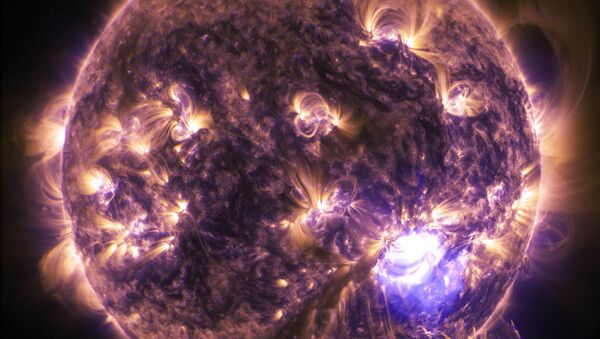NASA’s MMS satellites have successfully measured an ‘interplanetary shock’, a phenomenon involving the transfer of charged solar particles without bouncing directly into each other, prompting a wave-like spread across our solar system and beyond. The event was finally observed after years of space-based observation and decades of theorising about its possible existence.
According to the space agency, the wave-like energy transfer was demonstrated to occur when a patch of fast solar wind overtakes a slower patch, with energy transfer taking place through electromagnetic fields.
MMS spacecraft, searching for the phenomena for years, were finally able to spot it after aligning at just the right place in space at just the right moment in January 2018, observing the ‘collisionless shock’ involving two separate sets of ions, or streams of ‘solar wind’, using the high-resolution sensors packed aboard each of the individual satellites. To observe this particular event, the spacecraft used its Fast Plasma Investigation sensors to measure passing ions and electrons, with the sensors capable of doing so up to six times per second – an important feature, since such a ‘collisionless shock’ occurs in just half a second.
NASA’s MMS Finds First Interplanetary Shock | NASA https://t.co/VusLHx2G7x https://t.co/y1UzIrL4fL pic.twitter.com/LR5midpeLo
— matiere* (@matiere) 8 августа 2019 г.
“Looking at the data from January 8, the scientists noticed a clump of ions from the solar wind. Shortly after, they saw a second clump of ions, created by ions already in the area that had bounced off the shock as it passed by. Analysing this second population, the scientists found evidence to support a theory of energy transfer first posed in the 1980s,” NASA explained in a recent press release.
An international team of nearly two dozen physicists and astronomers lead by Dr. Ian Cohen of the Applied Physics Laboratory at Johns Hopkins University published a thorough study on the phenomena in a recent article in the Journal of Geophysical Research, with researchers building on work published by astrophysicists hypothesising on the existence of the ‘interplanetary shock’ phenomenon since the early 1980s.
According to NASA, scientists now hope to use MMS to spot other, weaker, “much rarer and less well understood” interplanetary shocks. Because such interplanetary shocks are a form of space weather found across the universe, including around other stars, inside supernovae, and among black holes, the phenomenon is expected to help scientists worldwide “gain a greater understanding” of such phenomena “across the universe.”
Launched in 2015, $1.1 billion MMS mission was originally intended as a two-year project, but has since remained operation well past its expiry date. Through their four years of operations, holding in tight formation to allow for a 3D mapping of space, the satellites have helped astronomers to analyse the dispersion of energy caused by solar storms, and to study shifts in Earth’s magnetosphere.




